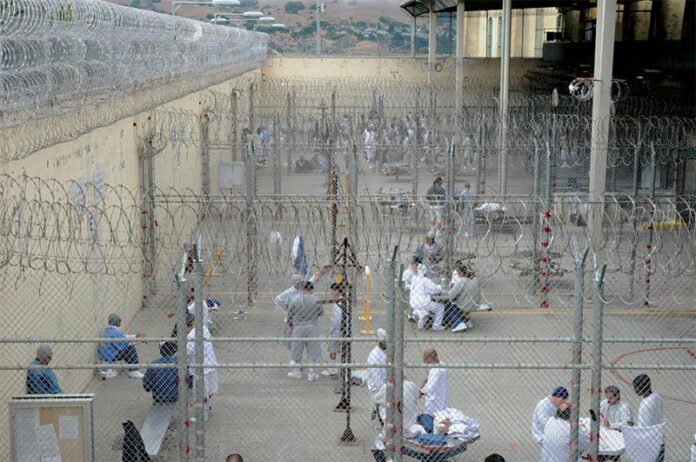Robyn Barbour was for the death penalty before she was against it. The Sacramento-area teacher used to support capital punishment in California, she says, “because my dad was in favor of it.”
Barbour had a change of heart when her grandmother was murdered in 1994. Her killer is now incarcerated at the Central California Women’s Facility in Chowchilla. That facility houses death row for women—but her grandmother’s murderer got a life sentence.
Barbour recalls a district attorney “who needed to enhance his political stature” by pushing for the death penalty. She also noted the inherent racial bias in the system: white victim, white perpetrator. Her grandmother’s murderer was “a serial killer,” says Barbour, “and if she had been black, she would have been executed.” Barbour now serves on the San Francisco–based Death Penalty Focus, an anti–death penalty group.
The state hasn’t executed anyone since 2006 because of challenges to the constitutionality of the practice in California that have hit on the method and process of putting the condemned to death. The method is embodied in the state’s struggle to come up with
an execution protocol that meets Eighth Amendment standards against cruel and unusual punishment.
The state said they were waiting for a ruling from the U.S. Supreme Court before proceeding. There’s a lethal-injection chamber at San Quentin built in 2008 waiting for its first customer.
The ruling on the matter, Glossip v. Gross, came down June 29. The Roberts court said a three-drug injection, despite well-publicized “botches,” doesn’t violate the Constitution.
Then there’s the process. A U.S. District Court judge ruled in 2014 that the death penalty in California is unconstitutional, not because of the method, but because of delays that stem from a lack of attorneys for defendants. State Attorney General Kamala Harris appealed the decision; it’s now in the hands of the 9th Circuit Court of Appeals.
Meanwhile, in 2006, a federal judge in California ruled that the three-drug cocktail then in use was unconstitutional. That ruling enacted a de facto moratorium on capital punishment.
“California is moving on two separate tracks,” says Robert Dunham, executive director of the Death Penalty Information Center (DPIC), a Washington, D.C.–based clearinghouse for all things execution. “One is the abolition, and the second is reactivating it. Obviously, those are internally contradictory tracks.”
Dunham says the state will submit its new draft protocol for comment, but that’s just the beginning. “It will be a matter of probably years before a protocol is in place and approved by the courts.”
State prison officials said they’d issue a draft California protocol within 120 days of the Supreme Court’s decision.
“In order to comply with California’s capital punishment laws, the California Department of Corrections and Rehabilitation [CDCR] has been developing lethal-injection-protocol regulations,” says agency spokesman Jeffrey Callison via email.
The state is pursuing a one-shot lethal-injection protocol, says CDCR deputy press secretary Terry Thornton. The one-shot solution has generally entailed a lethal dose of sodium thiopental, but pharmaceutical companies no longer provide that drug to correctional facilities. Officials here and in other states have worked to shield the source of the drug from public view.
The CDCR acknowledges that there’s been a problem with access to execution drugs, as it notes that there are currently 751 people on California’s death row as of July 7.
Depending on what happens with the case now before the Court of Appeals, this “two-track” standstill might be moot, says Dunham of the DPIC.
The 2014 District Court ruling threw out the capital conviction of Ernest Dewayne Jones; it found that the death penalty is unconstitutional “because of California’s failure to provide timely counsel to death row inmates,” says Dunham.
“Much of the coverage of the Jones case has talked about the death penalty [being] declared unconstitutional because of the amount of time it takes while the appellate process is completed,” adds Dunham. “That’s true as far as it goes, but a lot of people are under the mistaken impression that it’s because of endless appeals filed by inmates.”
The California Legislature limits the pool of lawyers available to inmates in capital cases. “The district court found that the state, and not the defendants, were responsible” for the appellate delays, he says. “California has a conundrum because it doesn’t have a mechanism to move the cases through the appellate process, and once that is completed, it has no method of execution. Fixing one without fixing the other is not a solution.”
For now, capital punishment
in California resembles an
M. C. Escher drawing—a Möbius strip going endlessly nowhere. Dunham recalls a print, “the one with the guy on the stairs, where you can be walking on the top and the bottom of the stairs at the same time.”
The method and the process, he says, “are two separate things, proceeding on two separate tracks that are oblivious to one another.”
Meanwhile, there are hundreds of condemned at San Quentin, and more on the way.
“You’d think,” says Barbour, “they would stop sending people there.”











